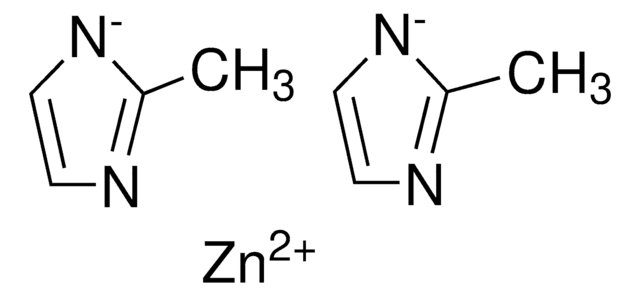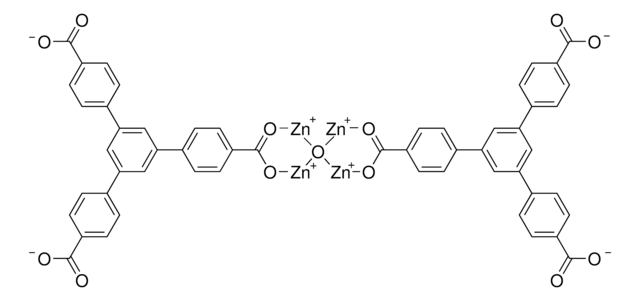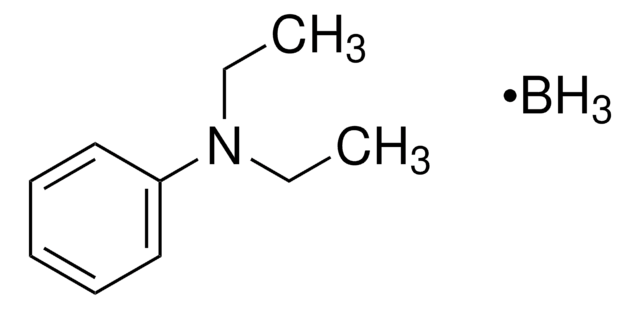688738
Basolite® A100
produced by BASF
Synonim(y):
Aluminum terephthalate, MIL-53(Al)
About This Item
Polecane produkty
Poziom jakości
Formularz
tablet
charakterystyka ekologicznej alternatywy
Design for Energy Efficiency
Learn more about the Principles of Green Chemistry.
sustainability
Greener Alternative Product
powierzchnia
1100-1500 m2/g
rozkład wielkości cząstek
31.55 μm (D50)
gęstość nasypowa
0.4 g/cm3
kategoria ekologicznej alternatywy
, Enabling
Opis ogólny
Zastosowanie
Inne uwagi
Informacje prawne
Hasło ostrzegawcze
Danger
Zwroty wskazujące rodzaj zagrożenia
Zwroty wskazujące środki ostrożności
Klasyfikacja zagrożeń
Eye Irrit. 2 - Repr. 1B
Kod klasy składowania
6.1C - Combustible acute toxic Cat.3 / toxic compounds or compounds which causing chronic effects
Klasa zagrożenia wodnego (WGK)
WGK 3
Temperatura zapłonu (°F)
Not applicable
Temperatura zapłonu (°C)
Not applicable
Środki ochrony indywidualnej
Eyeshields, Faceshields, Gloves, type P2 (EN 143) respirator cartridges
Wykazy regulacyjne
Wykazy regulacyjne dotyczą głównie produktów chemicznych. Można w nich podawać ograniczoną liczbę informacji na temat produktów niechemicznych. Brak wpisu oznacza, że żaden ze składników nie znajduje się w wykazie. Użytkownik odpowiada za zagwarantowanie bezpiecznego i zgodnego z prawem stosowania produktu.
EU REACH SVHC Candidate List
Wybierz jedną z najnowszych wersji:
Certyfikaty analizy (CoA)
Nie widzisz odpowiedniej wersji?
Jeśli potrzebujesz konkretnej wersji, możesz wyszukać konkretny certyfikat według numeru partii lub serii.
Masz już ten produkt?
Dokumenty związane z niedawno zakupionymi produktami zostały zamieszczone w Bibliotece dokumentów.
Klienci oglądali również te produkty
Produkty
Metal Organic Frameworks (MOFs)
Struktury metaloorganiczne (MOF) to porowate, krystaliczne materiały składające się z jonów metali związanych ligandami organicznymi.
Global Trade Item Number
| SKU | GTIN |
|---|---|
| 688738-500G | 4061833600153 |
| 688738-100G | 4061833466681 |
| 688738-10G | 4061833381052 |
Nasz zespół naukowców ma doświadczenie we wszystkich obszarach badań, w tym w naukach przyrodniczych, materiałoznawstwie, syntezie chemicznej, chromatografii, analityce i wielu innych dziedzinach.
Skontaktuj się z zespołem ds. pomocy technicznej






![Zinc bis[bis(trimethylsilyl)amide] 97%](/deepweb/assets/sigmaaldrich/product/structures/294/819/cd22dd81-f7c8-4f0c-944e-1b74c1ad5e6d/640/cd22dd81-f7c8-4f0c-944e-1b74c1ad5e6d.png)
![(11bR,11′bR)-4,4′-(9,9-Dimethyl-9H-xanthene-4,5-diyl)bis-dinaphtho[2,1-d:1′, 2′-f][1,3,2]dioxaphosphepin](/deepweb/assets/sigmaaldrich/product/structures/198/331/bd88130d-f49e-4bc8-b82e-5e43b3bcea95/640/bd88130d-f49e-4bc8-b82e-5e43b3bcea95.png)



